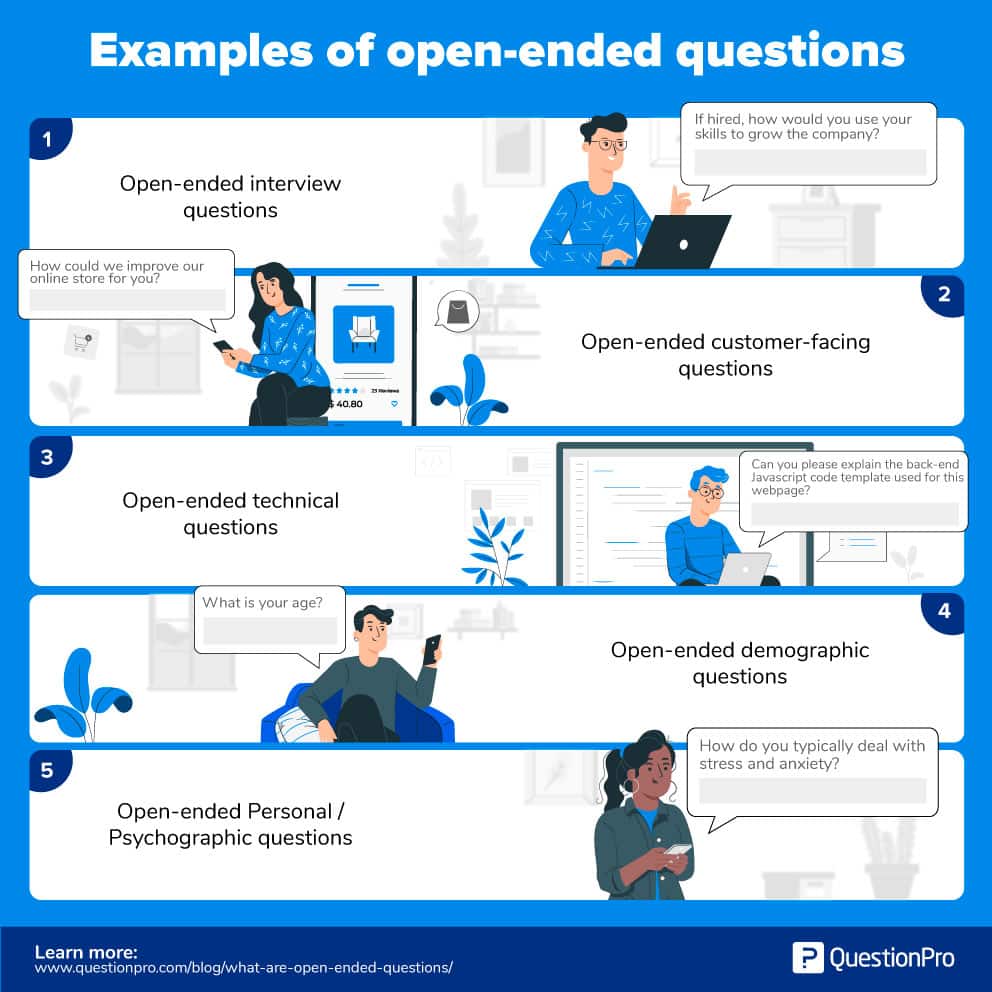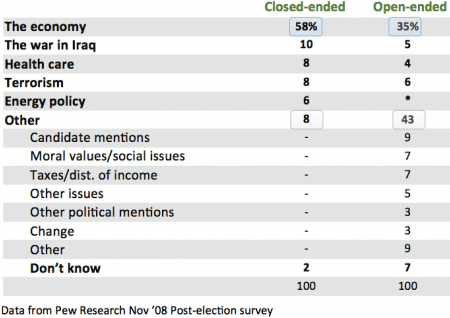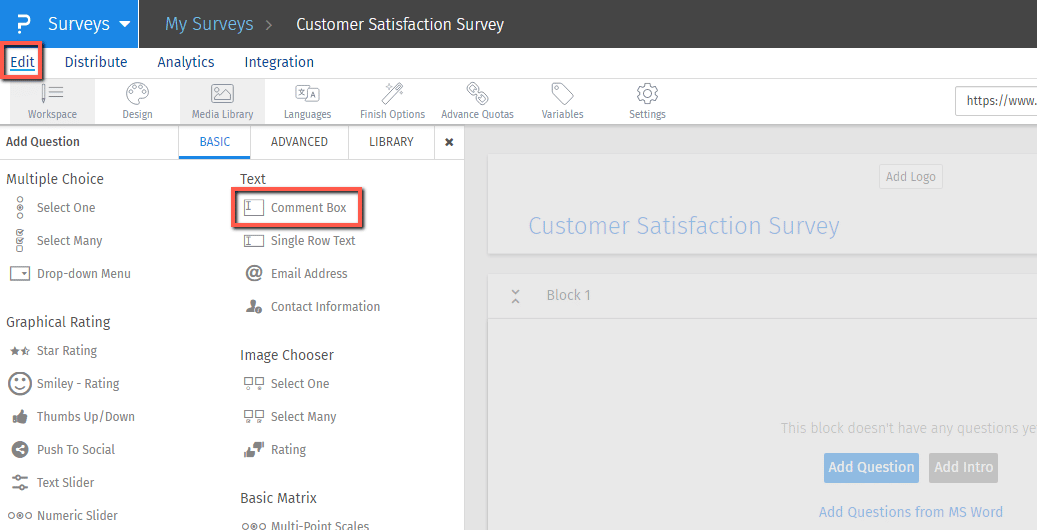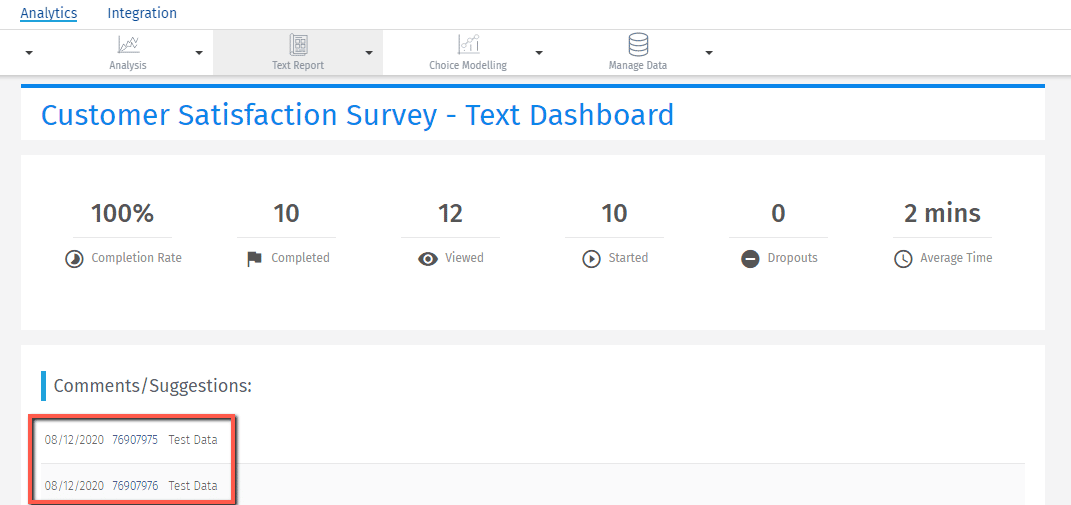Responses Gained Through Questionnaires Using Openended Questions Are Relatively Easy to Quantify
Content Index
Open-Ended Questions: Definition
Open-ended questions are free-form survey questions that allow respondents to answer in open text format so that they can answer based on their complete knowledge, feeling, and understanding. It means that the response to this question is not limited to a set of options.
Unlike a closed-ended question that leaves survey responses limited and narrow to the given options, open-ended question allows you to probe deep into the respondent's answers, gaining valuable information about the subject at hand. The responses to these questions can be used to attain detailed and descriptive information on a topic.
Open-ended questions are an integral part of Qualitative Market Research . This research technique depends heavily on open and subjective questions and answers on a given topic of discussion with room for further probing by the researcher, based on the answer given by the respondent. In a typical scenario, closed-ended questions are used to gather qualitative data from respondents.
When designing surveys , we often need to decide whether to use open-ended questions versus closed-ended questions to get specific information. Yet we need to be aware that open-ended questions and close-ended questions each have their strengths and weaknesses and perform in different ways.

Examples of Open Ended Questions
Respondents like open-ended questions as they get 100% control over what they want to respond to, and they don't feel restricted by the limited number of options. The beauty of open-ended questions is that they can never be a one-word answer. They'll either be in the form of lists, sentences or something longer like speech/paragraph.
So, to understand this more, here are some examples of open-ended questions:

- Interview open-ended question: How do you plan to use your existing skills to improve organizational growth, if hired?
- Customer-facing open-ended question: Please describe a scenario where our online marketplace helps you make day-to-day purchases.
- Technical open-ended question: Can you please explain the back-end Javascript code template used for this webpage?
- Demographic open-ended question: What is your age? (asked without survey options)
- Personal / Psychographic open-ended question: How do you typically deal with stress and anxiety?
In a study conducted by the Pew Research, respondents were asked, "What mattered most to you while deciding how you voted for president?" One group was asked this question in a close-ended question format while the other group was asked in an open-ended question format. The results are displayed below:

In the close-ended questions format, 58% of respondents chose "The economy". In the open-ended format, only 35% wrote an answer that indicated "The economy". Note that only 8% of respondents selected "Other" in the format of the close-ended question. With open-ended format, 43% of respondents wrote in a response that would have been categorized as "Other."
Open-Ended Questions vs Close Ended Questions
Open-ended questions motivate the respondents to put their feedback into words without restricting their thoughts. They aren't as objective and dominant as close-ended questions.
| Close-Ended Questions | Open-Ended Questions |
Do you like working with us?
| Tell us about your experience with our organization so far. |
Have you been stressed lately?
| Share with us what has been troubling you. |
How satisfied are you with your current job role?
| What do you expect from this appraisal? |
By using open-ended questions, the researcher gets to understand the true feelings their respondents have. They have an element that will give you information about different thought processes across your clientele, troubleshooting suggestions, get a peek into their inhibitions too.
- The open-ended question and close-ended questions are different tasks for respondents. In the open-ended task, respondents write down what is readily available in their minds. In the task of the close-ended question, we have respondents focus their "attention on specific responses chosen by the investigator" (Converse and Presser, 1986).
- Asking the same question in these two different formats will almost always produce different results. Many investigators have demonstrated this over several decades.
- Few respondents are going to select the "Other" category and enter responses that are different than the answer choices that are listed.
So what does this mean for us? If you can, do qualitative research first and make sure your close-ended questions represent the items that are in people's heads. We need the list of items to be complete since few respondents will select the "Other" category. It may also be necessary to list items that are not readily available to respondents if those items are important to you.
 Consider doing split-sample studies where half of the respondents see the question in the open-ended format while the other half sees the question in the close-ended questions format.
Consider doing split-sample studies where half of the respondents see the question in the open-ended format while the other half sees the question in the close-ended questions format.
When presenting results, I have found it helpful to explain to the audience, in a sentence or two, the fundamental differences between open-ended questions and close-ended questions. It helps them understand that these are not necessarily precise measurements, but measurements that require some interpretation relative to other questions in the survey and additional information from qualitative research. Hence, that is why they need an analyst like you or me!
Why use open-ended questions?
- No limits on the answers: Happy or unhappy, the customers need a platform to voice their opinions. As answer options for open-ended questions aren't provided, the respondent has the liberty to include details about feelings, attitudes, and views that they usually wouldn't get to submit in close-ended questions.
- Medium for respondents to answer creatively: These questions are more appreciative of the respondents than close-ended questions as users aren't expected to just "fill" them out for the sake of it.
- Respondents may stun you with the vision and creativity they show with their answers. Links to their blogs or a verse or two of their poetry will leave you spellbound.
- Expect the unexpected: If there are only close-ended questions in a microsurvey, the users usually get disconnected and fill it out without giving it much thought. With the kind of freedom that open-ended questions offer, users can respond the way they'd like to, be it the number of words or the details or the tone of the message.
- These responses may be marketing tips for improving the branding of the organization or some creative ideas that can lead to monetary gains.
- Get answers to complicated situations: Knotty situations need feedback that is more than just a mere Yes/No. Single-select or Multi-select questions cannot do justice to the detail or scrutiny required for some critical and complex situations.
- Open-ended questions work best in situations where the respondents are expected to explain their feedback or describe the troubles they're facing with the products.
- Understand your clientele better: You can learn from your respondents. The open-ended questions offer the freedom to these respondents to be vocal about their opinion that would be insightful for organizations.
- Respondent logic, thoughts, language, and reference choices can be known from these questions that can reveal a lot about how the respondent's brain functions.
Always think before designing a survey as to what your objective is. Scrutinize the purpose, evaluate the positives and negatives of using an open or closed answer for your research study. Try it by sending out to a selected database, analyzing the results, and planning improvements for the next round of surveys.
How to ask an Open-Ended Question?
Everything easy or complicated requires competence. Asking the right question is also one such thing that requires capabilities. Capability to understand and segment the target audience , determine the kind of questions that will work well with that audience, and determine the efficiency of open-ended questions.
Here are four ways to create effective open-ended questions:
- Understand the difference between open-ended questions and closed-ended questions: Before you start putting questions to paper, you need to have absolute clarity on open-ended vs closed-ended questions . Your objective of sending out an online survey should be clear, and based on that, you can evaluate the kind of questions you would want to use. These are usually used where the feelings and feedback of the customer are highly valued. To receive 100% transparent feedback on these questions, make sure that you don't lead the respondents with your questions and give them complete liberty to fill in whatever they want.
- Create a list of open-ended questions before curating the survey: Once you get clarity on what are open-ended questions and how to implement them, figure out a list of survey questions that you'd want to use. First, you can have a fair share of open-ended questions in your survey, and this number can fluctuate depending on the responses you receive.
Examples of open-ended questions like these are extremely popular and give you more value-added insights:
-
- Why do you think competitive market research is important before launching a new business?
- How do you think you'll overcome these obstacles in our project?
- Tell us about your experience with our onboarding process.
- What are your professional priorities at the moment?
- What domain of work motivates you?
- You can make a list of similar questions before you start executing the survey.
- Reconstruct any question into an open-ended question:
Observation is the key here. Observe what kind of questions do you usually ask your customers, prospects, and every other person you come across. Analyze whether your questions are closed-ended or open-ended. Try and convert those closed-ended questions into open-end ones wherever you think the latter would fetch you better results and valuable insights.
- Follow up a closed-ended question with an open-ended question:
This trick works wonders. It's not always possible to convert a closed question into an open one, but you can follow up by getting an open-ended question answered.
For example, if you have a closed question like – "Do you think the product was efficient?" with the options "Yes" and "No", you can follow it up with an open question like "How do you think we can make the product better?"
When it comes to customer satisfaction surveys , the advantages of open questions surpass that of the closed ones.
How to add Open-Ended Questions?
1. Goto: Login » Surveys » Edit » Workspace
2. Click on the Add Question button to add a question.
3. Select Basic, then go to the Text section and select Comment Box.
4. Enter the question text.

5. Select the data type: Single Row Text, Multiple Rows Text, Email address, or Numeric Data.

6. Select the Text Box Location (below or next to question text). Enabling "next to question text" will put the text box to the right of the question
How to view the data collected by an open-ended question?
1. Click on Login » Surveys » Analytics » Text Analytics » Text Report


Please note that analysis for open-ended text questions is not included in the Real-Time Summary Report. To view the analysis of open-ended questions, you can see the Word Cloud report.
Can you limit the number of characters in a text question?
You can set the limit of the number of characters that respondents can enter in the textbox.
How to mark the question as mandatory?
To make the question mandatory, you can toggle the validation on and select 'Force Response'. It is off by default. When 'Force Response' is not enabled, respondents can continue with the survey without selecting answers. If respondents go through all the pages in the questionnaire without selecting answers, the response is still considered complete. You can enable the required option to make a question required so that respondents can continue with the survey only after responding to the questions.

Create a free account
Source: https://www.questionpro.com/blog/what-are-open-ended-questions/
0 Response to "Responses Gained Through Questionnaires Using Openended Questions Are Relatively Easy to Quantify"
Post a Comment